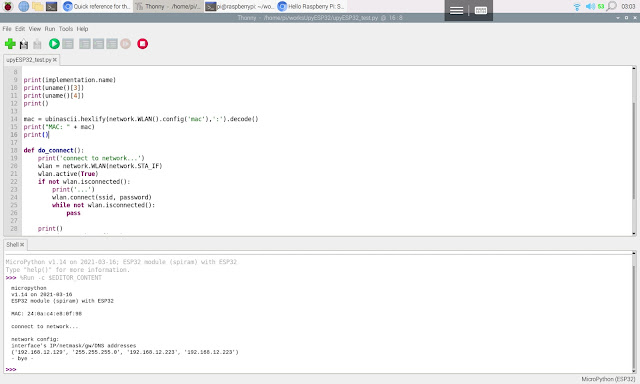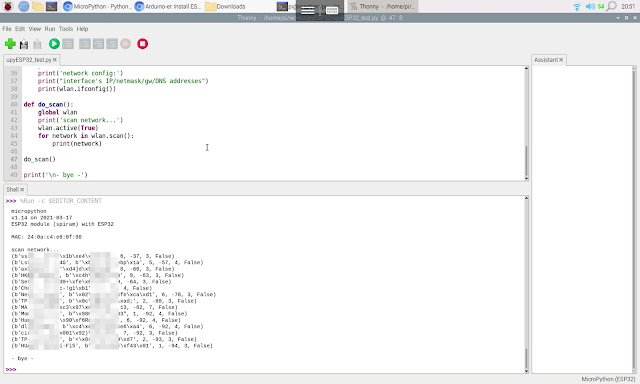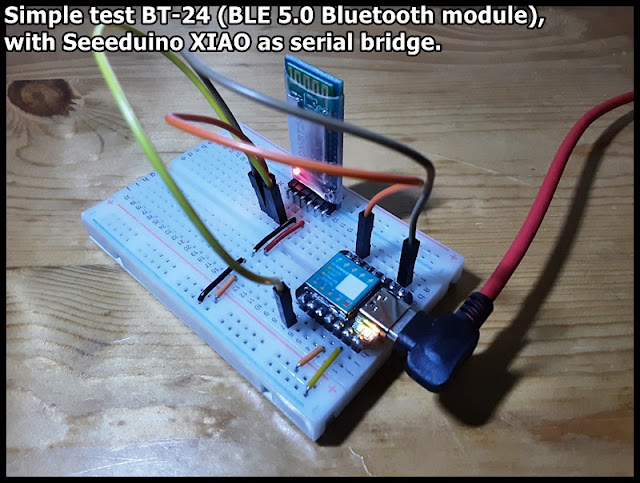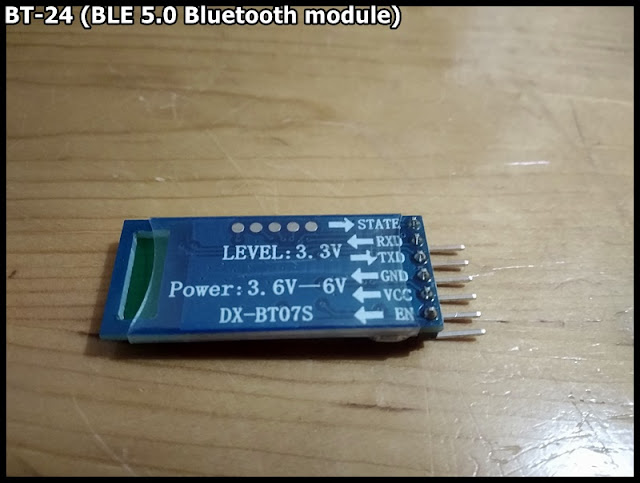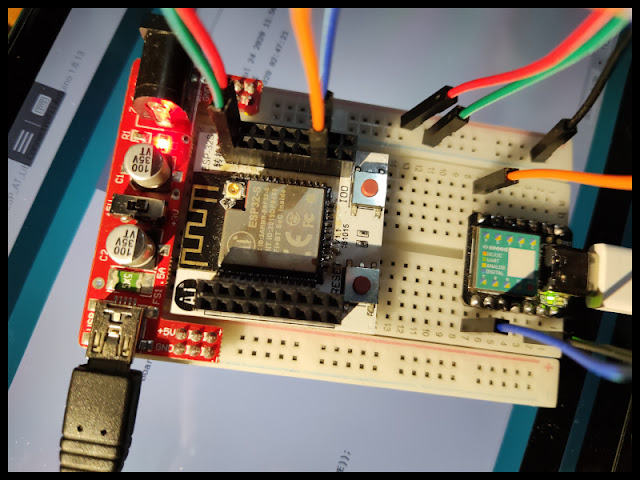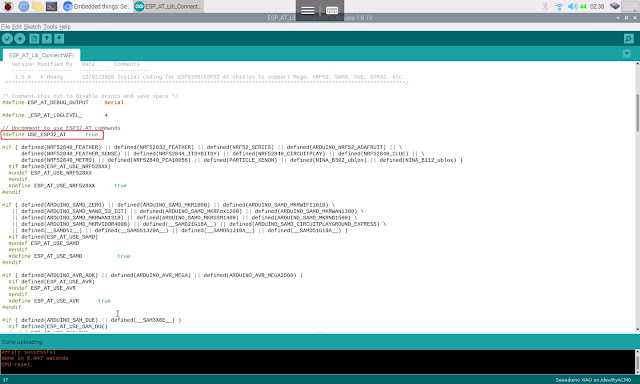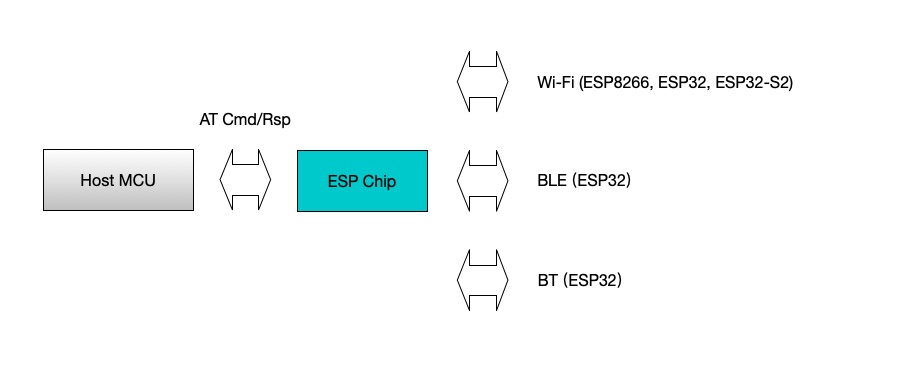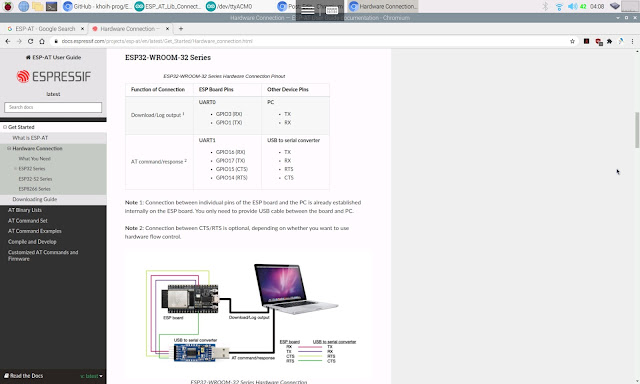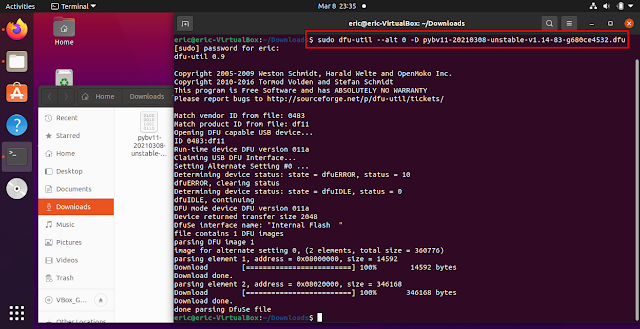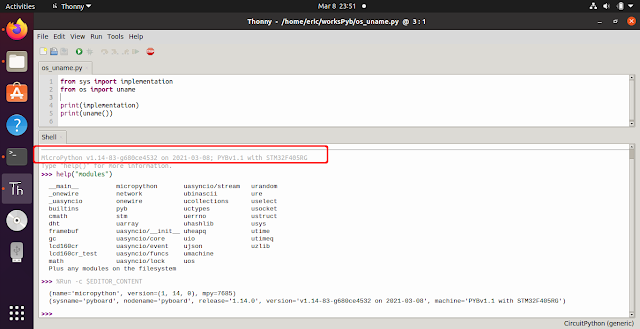Get WiFi MAC address, network info such as ip, netmask...
from os import uname
from sys import implementation
import network
import ubinascii
ssid = "ssid"
password = "password"
print(implementation.name)
print(uname()[3])
print(uname()[4])
print()
mac = ubinascii.hexlify(network.WLAN().config('mac'),':').decode()
print("MAC: " + mac)
print()
def do_connect():
print('connect to network...')
wlan = network.WLAN(network.STA_IF)
wlan.active(True)
if not wlan.isconnected():
print('...')
wlan.connect(ssid, password)
while not wlan.isconnected():
pass
print()
print('network config:')
print("interface's IP/netmask/gw/DNS addresses")
print(wlan.ifconfig())
do_connect()
print('- bye -')
Scan WiFi networks:
from os import uname
from sys import implementation
import network
import ubinascii
import utime
ssid = "ssid"
password = "password"
print(implementation.name)
print(uname()[3])
print(uname()[4])
print()
mac = ubinascii.hexlify(network.WLAN().config('mac'),':').decode()
print("MAC: " + mac)
print()
#init ESP32 as STA
wlan = network.WLAN(network.STA_IF)
wlan.active(True)
wlan.disconnect()
utime.sleep(1)
def do_connect():
global wlan
print('connect to network...')
wlan.active(True)
if not wlan.isconnected():
print('...')
wlan.connect(ssid, password)
while not wlan.isconnected():
pass
print()
print('network config:')
print("interface's IP/netmask/gw/DNS addresses")
print(wlan.ifconfig())
def do_scan():
global wlan
print('scan network...')
wlan.active(True)
for network in wlan.scan():
print(network)
do_scan()
print('\n- bye -')
ref:
~
Docs > Quick reference for the ESP32 > Networking
